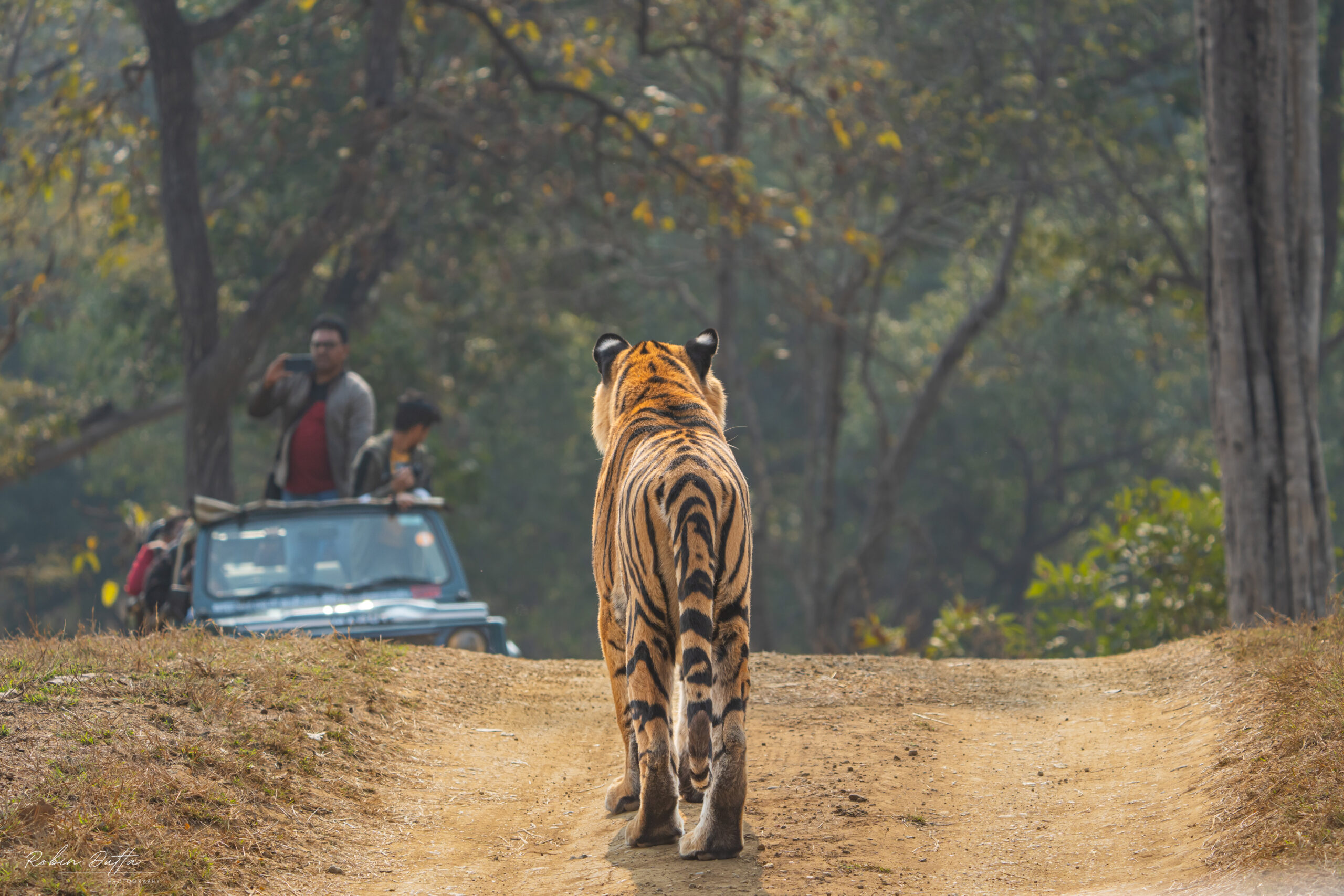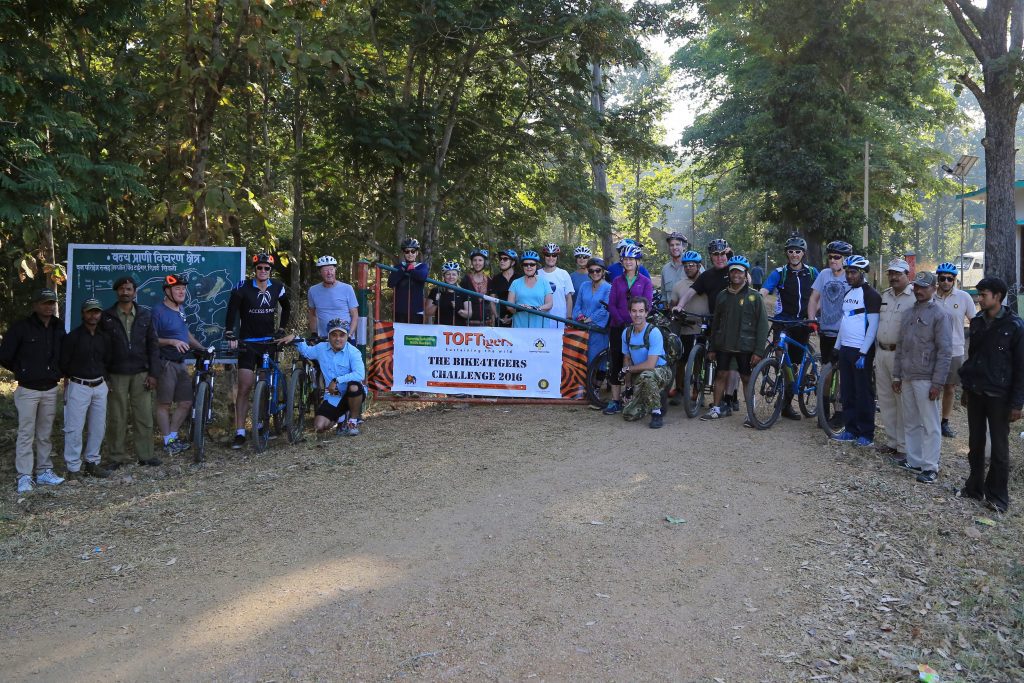Full-Day Tiger Safari in India’s Top Tiger Reserves: Tadoba, Bandhavgarh, Kanha & More
Picture this. A few hours into your safari, a tiger finally steps out of the woods, the golden light catching its amber eyes. You position your camera, adjusting for the perfect shot, and click. Were it a regular safari, you might have been leaving the park when this exciting moment arose. But not today. With a full-day tiger safari, you stay put – waiting, watching, anticipating. As the sun climbs higher, the forest shifts. While other vehicles make their way to the exit gates, you move deeper into the wilderness, tracking fresh pugmarks, following the calls of the wild, and witnessing the jungle beyond usual safari hours.
This is the advantage of a full-day safari. More time. More freedom. More opportunities to capture wildlife in its rawest form.
In this blog, we take an in-depth look at the advantages of choosing a full-day safari, and explore some of the best full-day tiger safari experiences in the core and buffer zones of Tadoba, Bandhavgarh, Kanha, Pench, Satpura, and Panna National Parks.
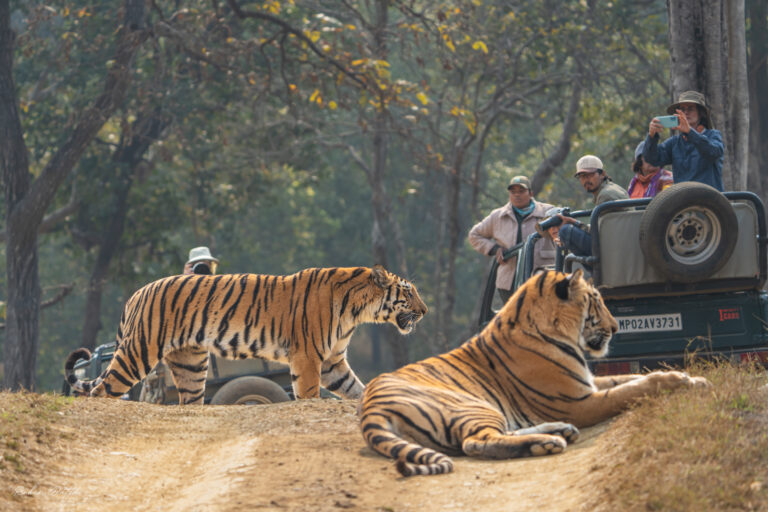
Why Choose a Full-Day Tiger Safari over Morning / Evening Safaris?
Exploring the vast wilderness of Central India through a full-day safari offers an unparalleled experience for wildlife photographers, filmmakers and nature enthusiasts. While regular safaris take place during morning and evening slots, full-day safaris offer uninterrupted access to national parks from dawn till dusk, providing opportunities for exclusive sightings and a better understanding of the forest’s rhythms.
For safari-goers keen on experiencing the pulse of the jungle in a deeper and more comprehensive way, here’s why opting for a full-day safari can transform your wildlife adventure into something unforgettable:
1. Extended Time in the Park
Unlike regular safaris, which are limited to either a morning or evening window of 3-5 hours depending on the season, a full-day safari grants access to permit holders from sunrise to sunset. Visitors are allowed to enter the park 15 minutes before regular vehicles, and exit the park 15 minutes after everyone else leaves.
One can explore the park on an uninterrupted basis for up to 13 hours, maximizing their chances of sightings by covering longer distances and a much wider area. Full-day safaris provide guides and naturalists with the luxury of time to track and locate wildlife, which can lead to magical encounters.
2. Flexibility in Zone Access
Most parks assign specific zones to safari vehicles during morning and evening safaris, restricting movement within designated areas. Full-day safari permits often allow visitors to move freely between multiple tourism zones, offering greater flexibility to track animal movements across the length and breadth of the forest. Despite the mobility offered, it is essential to stay on designated routes and follow park regulations designed to protect these sensitive habitats.

3. Witness Wildlife at All Hours, with Chances of Sighting Rare and Elusive Species
Wildlife behavior and movement varies significantly throughout the day and across parks and species. By staying within the boundaries of the national park through the day, one can observe an entire spectrum of activity, gaining a richer understanding of the inhabitants’ rhythms
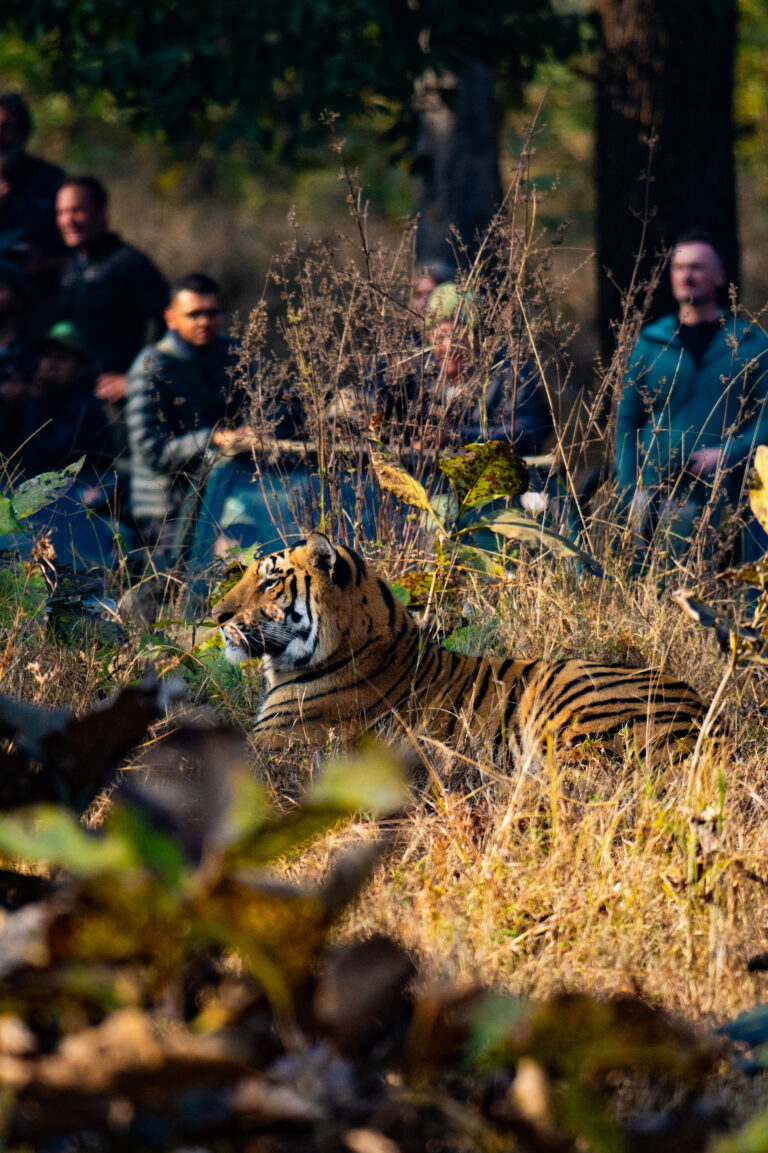
4. Fewer Vehicles Means Less Crowd
Full-day permits are limited to a handful of vehicles per day, which means quieter trails away from overcrowded routes and sightings, and more time to focus on high quality photography. Fixed entry and exit time for regular jeep safaris can lead to dozens of vehicles entering and exiting at the same time, creating a rush at park gates.
5. Ideal for Serious Wildlife Photographers and Filmmakers
With the freedom to explore and observe different landscapes at varying times of day and unique animal behavior, photographers can capture wildlife in diverse lighting conditions. Sightings are very exclusive for photographers and wildlife filmmakers with better vantage points, offering the chance to photograph animals in a peaceful environment without jostling for the right angle or spot.
Next, let’s explore some of the best tiger reserves that offer full-day safaris in Central India.
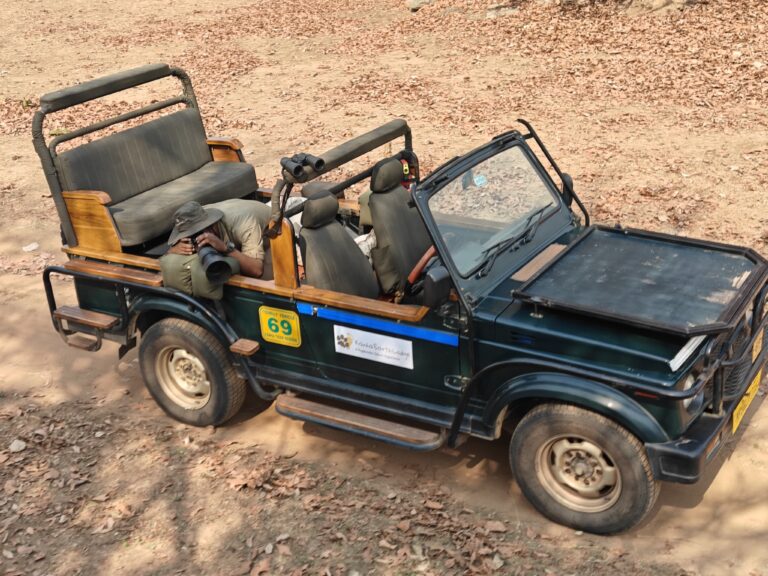
Full-Day Safari in Tadoba National Park – Core & Buffer Zones
Tadoba-Andhari Tiger Reserve in Maharashtra is one of India’s best tiger reserves, with high chances of spotting this big cat, known for its large population. 22 gates currently provide access to the park’s core and buffer zones. Opting for a full-day safari here enables unrestricted movement between core zones. As buffer zones are far and not connected, it is neither allowed nor practical to move between them.
Tadoba’s tourism and buffer zones both offer stunning encounters with apex predators. Core areas of Moharli, Tadoba, and Kolara, along with buffer zones such as Nimdhela, Agarzari, Devada, and Junona, are recommended for full-day sightings.
Waterholes like Pandharpauni and Telia Lake are prime spots where wildlife congregate, especially in summer, ideal for photographers seeking dramatic frames.
For those staying at the best resort in Tadoba National Park, like Waghoba Eco-Lodge, the full-day safari experience is further elevated with the convenience of hot meals collected at the gate and seamless access to top wildlife zones.
Washrooms and other essential tourist facilities are also available within the park.
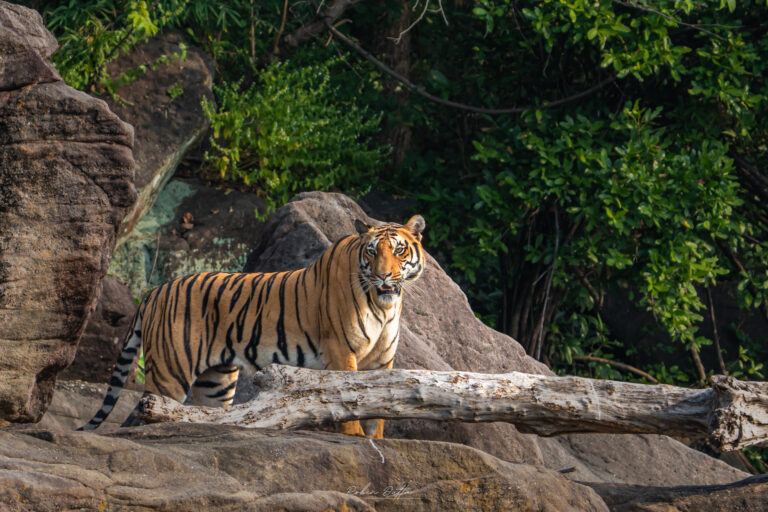
Full-Day Safari in Bandhavgarh National Park – Core Zone
Bandhavgarh National Park in Madhya Pradesh, renowned for its dense tiger population, is synonymous with tiger sightings. The park’s full-day safari offers an extended opportunity to track these big cats in their natural habitat across the core zones of Tala, Magadhi, and Khitauli. Apart from tigers, one can spot leopards, gaur, wild boars, and numerous avian species.
Guests staying at premium accommodations like Tree House Hideaway or Kings Lodge, a leading resort in Bandhavgarh National Park, enjoy added flexibility during the full-day safari. They have the option to briefly exit the park for a relaxing lunch and a hot shower, or alternatively, the lodge can deliver a freshly prepared hot meal to the park gate. Guests can then collect and enjoy it at a designated spot within the park. For added convenience, washroom facilities are available both near the gate and at the central point inside the park.
Also Read: The Best Time for Tiger Safaris in India: A Month-by-Month Guide
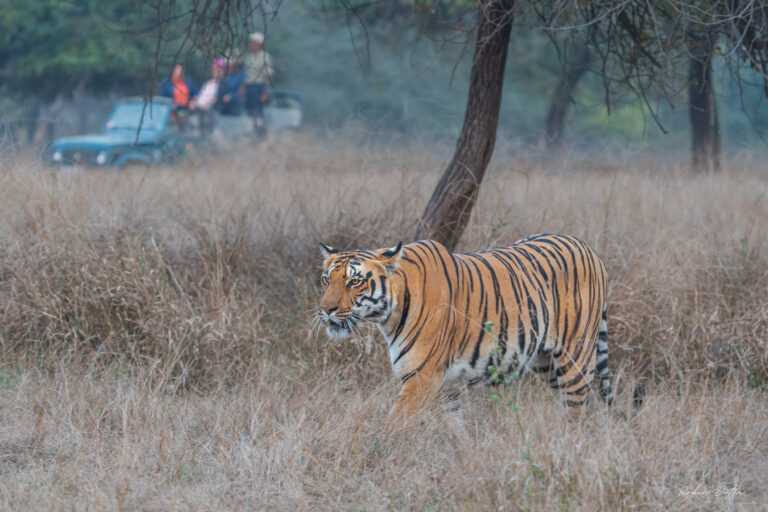
Full-Day Safari in Kanha National Park – Core Zone
Kanha National Park is home to the rare hard-ground barasingha that made a successful comeback from the brink of extinction, a thriving tiger population, and scenic landscapes that inspired The Jungle Book.
A full-day safari allows continuous access between Kanha’s four core zones – Kanha, Kisli, Mukki, and Sarhi. A jeep with a permit can enter via any of the three gates – Khatia, Mukki or Sarhi gate. The area covers vast meadows, bamboo and sal forests, providing varied terrain for tracking wildlife. Access is restricted in the buffer areas when booking a full-day tiger safari.
Since Kanha is a large park, guests often appreciate the convenience offered by luxury resorts in Kanha National Park, such as Kanha Earth Lodge, which ensures a seamless full-day safari experience. Meals and soft beverages are thoughtfully packed in advance by the lodge team to sustain guests throughout the day. A central point within the park provides a canteen and toilet facilities for much-needed breaks. However, due to the vastness of the terrain and time limitations, it’s generally not recommended to exit the park mid-safari to return to the lodge unless absolutely necessary.
Full-Day Safari in Pench National Park – Core Area
Spanning the two states of Madhya Pradesh and Maharashtra, Pench National Park is famous for being the forest where Rudyard Kipling’s The Jungle Book is based. A full-day safari here is an immersive way to track Mowgli’s world, where the dramatic landscape is a paradise for photographers.
Turia, Karmajhiri, and Jamtara Gates provide access to Pench’s unique mixed forests, riverine habitats, and meadows in the core tourism area. While a full-day safari permit allows unrestricted movement across zones, certain geographical features may limit access. For instance, the Pench River acts as a natural barrier between the areas accessible via Karmajhiri and Jamtara, preventing crossover between the two.
Guests staying at some of the best resorts in Pench National Park, such as Pench Tree Lodge, benefit from thoughtful amenities and flexible safari planning, enhancing the overall wilderness experience.
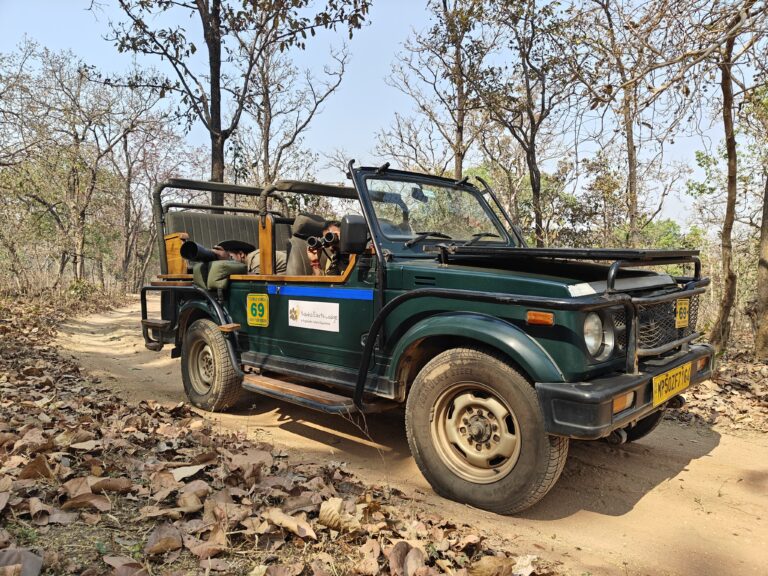
Full-Day Safari in Satpura National Park – Core Zone
Satpura National Park stands apart for its remote, untouched wilderness, and varied landscapes that include gushing rivers, rolling hills and mixed forests. Full-day access allows visitors to traverse deeper into the park’s wilderness, offering solitude and unfiltered wildlife encounters. The region offers exceptional sightings of leopards, sloth bears, and giant squirrels. With over 300 bird species, this biodiversity haven attracts rare and migratory birds, like the Malabar whistling thrush and crested serpent eagles.
One can enter the Madhai Core Zone from the Madhai or Churna Gates, with this area being the most popular for tiger sightings. Guests staying at premium resorts in Satpura National Park, such as Denwa Backwater Escape, benefit from curated experiences tailored for full-day safaris.
For lunch, they have two options: enjoy a hot meal at designated forest rest houses within specific zones, or opt for a packed lunch and snacks prepared by the lodge, which can be consumed at authorized rest areas within the park. Basic toilet facilities are available at forest camps, including Churna.
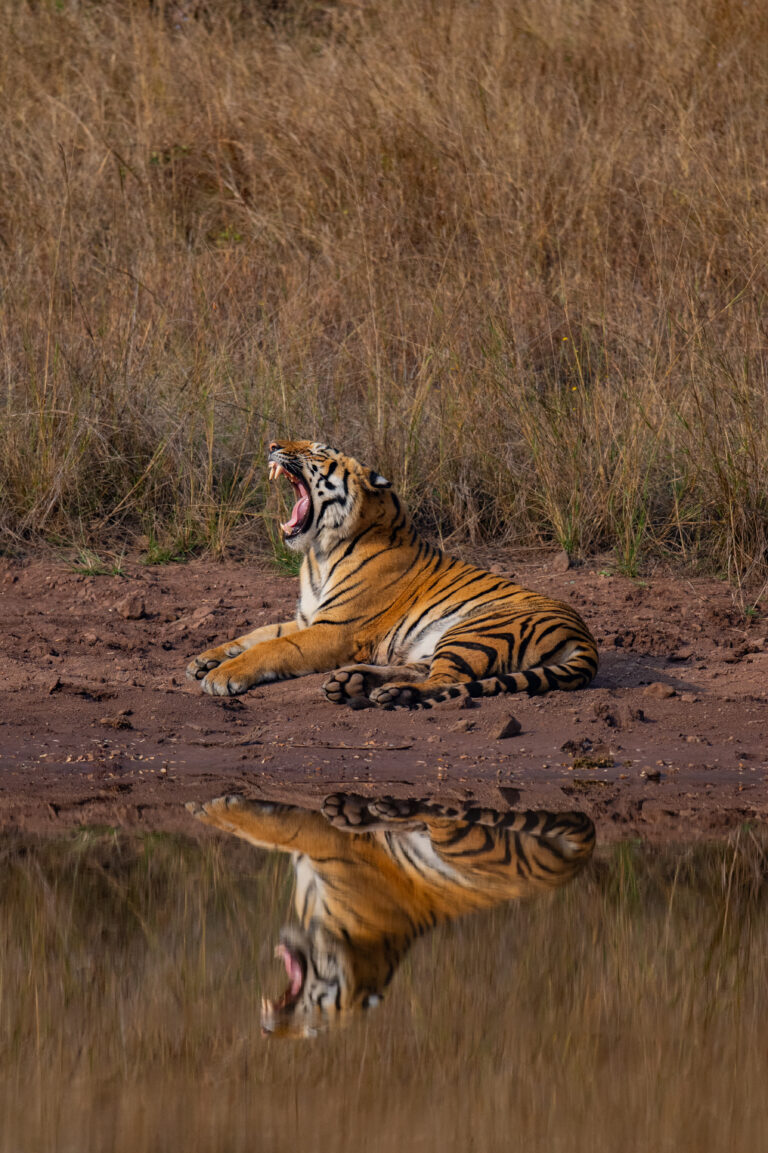
Full-Day Safari in Panna National Park – Core Zone
Panna National Park, once declared devoid of tigers, has made a remarkable comeback through successful conservation efforts. A full-day safari here reveals a thriving ecosystem along the Ken River across zones. The park’s core region, including Hinouta and Madla, offers scenic tiger tracking opportunities along rocky plateaus, waterfalls, and riverbanks. During a full-day safari, you might also spot leopards, hyenas, chinkaras, and crocodiles basking along the river’s tranquil waters.
Things to Keep in Mind Before Booking a Full-Day Tiger Safari in India
- Full-day safari permits are limited and in demand, especially with photographers and filmmakers. Book well in advance to ensure availability.
- It is essential to note that costs for a full-day safari are significantly higher than booking the regular safari, especially considering the forest permit fees. Depending on your goals and interests, a full-day safari can be worth shelling out for an incomparable experience and some priceless photographs.
- A full-day safari means spending over half a day outdoors. Depending on the season, this might include extreme afternoon temperatures crossing 40 degrees C, and cool temperatures under 10 degrees C before sunrise and sunset. Remember to wear sunscreen and layers to shield yourself no matter the weather, and carry a hat and/or scarf for additional protection.
- Carry the right equipment to make the most of your extended time in the forest. A camera with a telephoto lens, extra memory cards and spare batteries will go a long way.
A full-day wildlife safari across India’s national parks allows you to slow down and soak in the environment, rather than rushing from one sighting to the next. It offers better access to the park – more time in the forest, fewer limitations across zones, and an incomparable chance to witness animals in the wild in complete privacy and understand the subtleties of the ecosystem.
If you’re looking for an immersive tiger tours in India experience that allows you to go deeper and further in the wild, reach out to us to help plan your safari.
Written by Pooja Kumar
About the Author: Pooja is a nature and wildlife enthusiast who finds joy in exploring the wilderness, whether on safari in the forests or hiking in the hills. As a content writer with Pugdundee Safaris, she draws inspiration from nature to craft stories and poetry that connect the human experience with the beauty of the natural world. Through her writing, she hopes to inspire and educate others about the wonders of wildlife and conservation.

